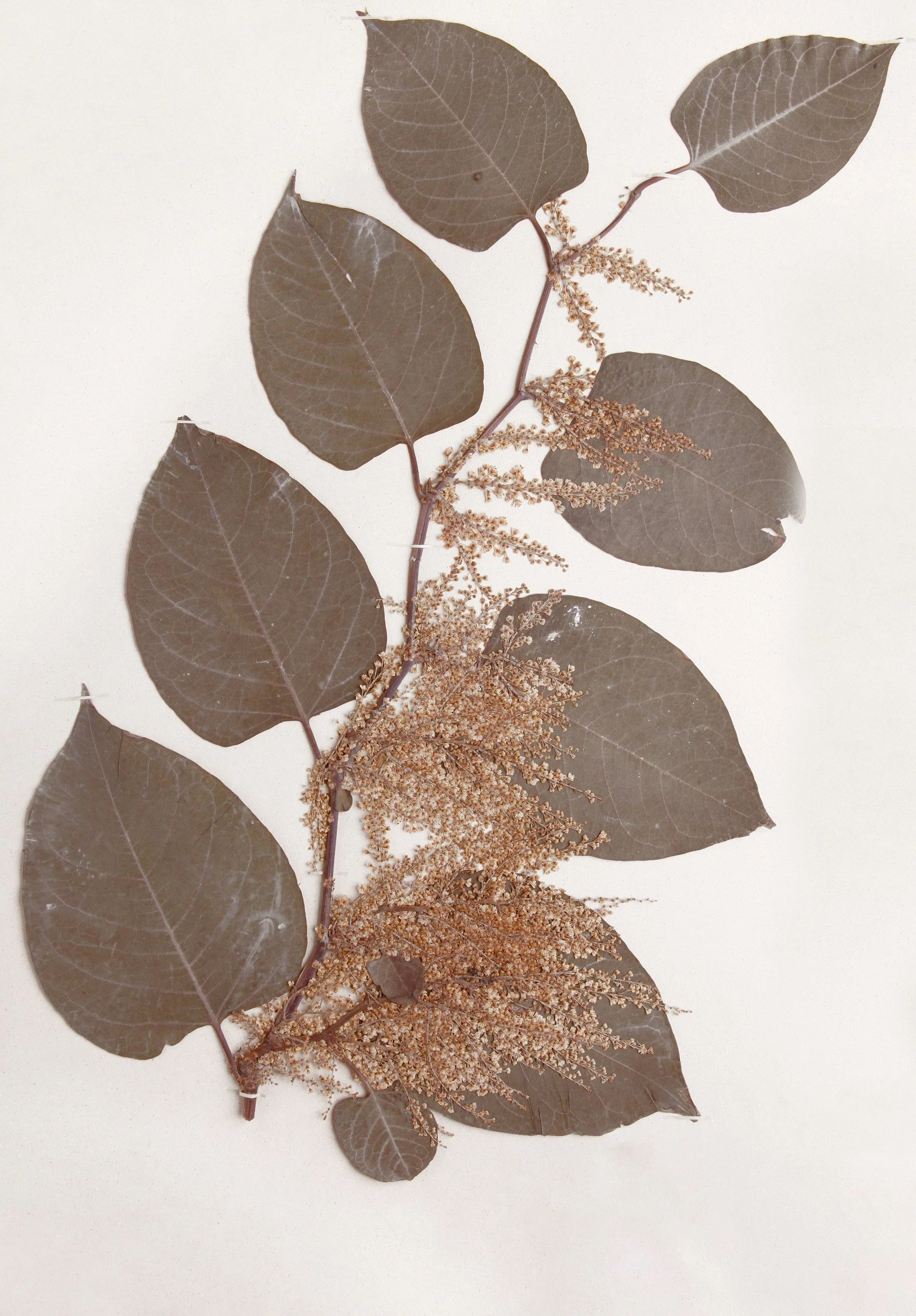
Restoring Balance: Managing Invasive Species
Removing invasive plants and adding native ones go hand in hand when creating a thriving, healthy ecosystem. Invasive plants aren’t just unwelcome guests—they’re environmental troublemakers. Each state or region has its own list of plants labeled invasive, meaning they’re non-native and capable of causing significant harm to the environment.
Here in the Upper Valley, some common culprits you’ve probably seen in woods, yards, or neighborhoods include Japanese knotweed (pictured in the photo at the top of this page and in the middle photo below), barberry, garlic mustard (photo on the left below), autumn olive, buckthorn, burning bush (photo on the right below), and even those seemingly innocent forget-me-nots. While they might look pretty or seem harmless, invasive plants are sneaky—they grow aggressively, out-compete native plants, and disrupt the balance wildlife depends on.
Here are some surprising things homeowners should know about invasive plants:
• They don’t just stay where you plant them. Many invasives spread rapidly through seeds carried by wind, water, or even birds, popping up far from where they started.
• They’re masters of survival. Some invasives, like Japanese knotweed, can regrow from the tiniest root fragment. You’ll need persistence and a plan to remove them once and for all!
• They can change soil chemistry. Plants like barberry can alter the soil in ways that make it harder for native plants to return, giving them a long-term competitive edge.
• Wildlife pays the price. While invasives might provide some food or shelter, they often lack the nutritional value or habitat quality that native wildlife needs to thrive.
If you’re battling invasives, persistence is key. Start small, be methodical, and don’t forget to replace them with native plants. By taking action, you’re giving your yard and the environment a fresh start—and helping restore the balance that nature intended! See below for effective management strategies and up-to-date invasive species lists for New Hampshire and Vermont.



First, Let’s Define Invasive.
An "invasive species" is defined as a species that is
Non-native (or alien) to the ecosystem under consideration; and
Whose introduction causes or is likely to cause economic or environmental harm or harm to human health.
Invasive Plant Species of NH
Current NH list: https://www.agriculture.nh.gov/publications-forms/documents/prohibited-invasive-species.pdf
The NH watch list comprises plants that may be considered invasive in the future: https://www.agriculture.nh.gov/publications-forms/documents/restricted-invasive-species.pdf
VT Invasives
VT has a website with photos at https://vtinvasives.org/gallery-of-terrestrial-plants
Removal
Removing invasives can be a multi-year project. Don't be discouraged! https://extension.unh.edu/blog/2023/08/dealing-invasive-species-pick-your-battles
See the Collaborate! page to find people doing this work in your community.
Replacement
For suggestions on what to plant instead of your favorite invasive, see various "plant this not that" lists online:
https://www.backyardgardenlover.com/invasive-plants-in-new-hampshire/
https://www.fs.usda.gov/wildflowers/Native_Plant_Materials/Native_Gardening/alternatives.shtml
https://www.bhg.com/gardening/gardening-by-region/native-alternatives-to-invasive-plants/
https://www.epicgardening.com/invasive-perennials/
https://brightlanegardens.com/native-plants/invasive-species/5-native-plant-alternatives/